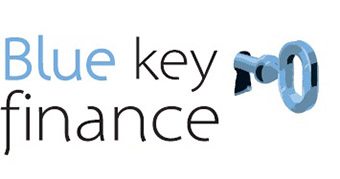Understand if an SMSF is right for you
A self-managed super fund (SMSF) is a private super fund that you manage yourself. SMSFs are different to industry and retail super funds.
When you manage your own super, you put the money you would normally put in a retail or industry super fund into your own SMSF. You choose the investments and the insurance.
Your SMSF can have no more than six members. As a member, you are a trustee of the fund — or you can get a corporate trustee. In either case, you are responsible for the fund.
While having control over your own super can be appealing, it’s a lot of work and comes with risks.
Only set up your own super fund if you’re 100% committed and understand what’s involved.
The risks and responsibilities of SMSFs
All members of an SMSF are responsible for the fund’s decisions and for complying with the law.
These responsibilities come with risks:
• If you lose money through theft or fraud, you won’t have access to any special compensation schemes or to the Australian Financial Complaints Authority (AFCA).
• You are personally liable for all the fund’s decisions — even if you get help from a professional (such as a financial adviser, accountant or legal professional), or if another member made the decision.
• Your investments may not bring the returns you expect.
• You are responsible for managing the fund even if your circumstances change — for example, if you lose your job.
• There may be a negative impact on your SMSF if there is a relationship breakdown between members, or if a member dies or becomes ill.
• You could lose insurance if you’re moving from an industry or retail super fund to an SMSF.
The ATO has more information on the key responsibilities for SMSF trustees.
What’s involved with an SMSF
The Australian Taxation Office (ATO) explains your responsibilities.
SMSFs take time and money
Managing an SMSF is a lot of work. Even if you get professional help, it’s time-consuming.
You need enough time to set up the fund, and time to manage ongoing activities, such as:
• researching investments
• keeping up to date with changes in superannuation and tax laws
• setting up and reviewing an investment strategy
• accounting, keeping records, and arranging an audit each year by an approved SMSF auditor
SMSF trustees spend on average more than eight hours a month managing an SMSF. That’s more than 100 hours a year.
Set-up costs
The set-up and running costs of an SMSF can be high. Ongoing costs can include:
• investing
• accounting
• auditing
• tax advice
• legal advice
• financial advice
• insurance premiums
Some costs may be tax deductible, but most will be out-of-pocket expenses for the SMSF.
You don’t have to set up an SMSF to choose your own investments.
You need financial and legal knowledge
You need the financial and legal knowledge and skills to:
• set and manage an investment strategy that meets your risk-tolerance and retirement needs
• comply with tax, super and investment laws
• arrange insurance for fund members
• understand different investment markets, and build and manage a diversified investment portfolio
Be wary of anyone who offers to set up an SMSF to withdraw your super to pay off debts. It’s illegal.
SMSF starting balance
When making the decision to set up an SMSF, it’s important to focus on the overall suitability rather than just the starting balance of the fund.
An SMSF with a lower starting balance may be suitable for you if, for example:
• you are willing and able to do most of the administration and management of the SMSF yourself
• a business property, an inheritance, or funds from another superannuation account will be added to your SMSF
There may also be circumstances when an SMSF with a higher starting balance is not suitable for you because it does not meet your objectives, financial situation or needs.
For example, you may not have the skills, time or experience to be an SMSF trustee.
ASIC has prepared case studies to help you work out if an SMSF is suitable for you based on your superannuation balance.
When a SMSF might be suitable for you
Some indicators that an SMSF might be suitable are:
• you are willing to play an active part in managing your financial affairs
• you have a good understanding of your role and responsibilities as an SMSF trustee
• setting up an SMSF will help you achieve your goals and objectives, and
• setting up an SMSF would be cost-effective for you.
The ATO has information about SMSF expenses by fund size.
If you want to set up an SMSF
If you are 100% sure about managing your own super fund, start researching investment options. Also consider getting advice from a licensed financial adviser.
Research your investment options
Part of the appeal of an SMSF is controlling and having access to a broader range of investments.
However, there are some very strict rules about what you can invest your super in. Check restrictions on investments on the ATO website.
Get professional advice
Professionals like SMSF auditors, accountants and lawyers can help you with an SMSF. However, these professionals may be limited to the kind of advice they can give you.
A licensed financial adviser with specialist SMSF knowledge can help you:
• make an informed decision about whether an SMSF is right for you
• set up and run your SMSF
• decide on an appropriate trustee structure for your SMSF
• understand the penalties for SMSF non-compliance
Financial advice about setting up an SMSF should always include information about:
• why an SMSF is suitable for you and how it will help you achieve your retirement savings goals
• the risk and costs
• the potential benefits you may lose
• your compliance responsibilities and any penalties for non-compliance
• the skills, knowledge and time commitment you need
Set up your SMSF
All SMSFs are regulated by the ATO. The self-managed super funds section of the ATO website explains what you need to do to set up your fund.
How you structure your SMSF is also important as this can impact your compliance obligations.
There are two types of structures you can choose for your SMSF: individual trustees or a corporate trustee. The ATO has more information about the obligations for each structure.




Leave a Reply
Want to join the discussion?Feel free to contribute!